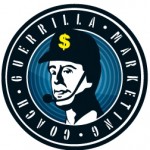This checklist, excerpted from Guerrilla Marketing on the Internet, contains the most important elements and devices to include in your sales letter. So, learn them, memorize them, and use them.
1. Identify your visitors’ most urgent problem
You can’t create an effective sales letter if you don’t know or can’t articulate your target audiences’ most pressing problem. So, before you do anything else find this out, otherwise your letter will be for naught.
Once you’re sure you’ve captured it accurately, dig a little deeper and see if there are one or two others that are weighing on their minds and jot them down as well. And remember, you’re the problem-solver, so make sure you offer the best solution.
2. Create an attention-grabbing headline (and subheadings)
The Internet is a very crowded place and your website will either be a momentum-gathering snowball heading down a steep mountain or just another snowflake in the blizzard. If you don’t want your website to get lost in the crowd your headline must instantly call out to your visitors and pique their interest. If it doesn’t they’ll leave. If it does, you’re over the first copy hurdle and they’ll stay a bit longer.
Simply put, your sales letter’s headline must contain your most compelling benefit, and worded in a way that arouses curiosity, and triggers their “hot buttons”. They can be short or long and can include a subheading or not. Your headline should be positioned at the top and center of your webpage and be immediately noticeable. You can accomplish this in a number of ways like using bigger font sizes, different colors, and bolding key words and phrases.
Your headline must be powerful enough to stand on its own – that is, you should be able to add your url or toll-free number and use it as a small ad.
People love cliffhangers, inside secrets, how-tos, and persuasive questions so use them to your advantage, as in the following paint-by-numbers headline templates.
• LITTLE KNOWN SECRETS OF _______________ REVEALED!
• LEARN HOW TO ____________ BEFORE NOON!
• CAUTION: DON’T EVEN CONSIDER _____________ UNTIL YOU HEAR THIS!
• DO YOU MAKE THE FOLLOWING _______ MISTAKES WHEN YOU __________?
• WHO ELSE WANTS ________?
3. State their Problem
Now that you have their attention, you need to keep their interest. Affirm their problem and describe in colorful language how it feels to have that problem. Your visitors should be nodding and thinking, “You got it! That’s exactly how I feel!” Keep in mind that guerrilla marketing is based on the science of human psychology and the truth is that most people are content with the status quo and need to be inspired to do something out of their comfort zone – so paint a vivid picture of their pain and inject a sense of urgency.
4. Offer the Solution
After you’ve accurately stated their problem, offer your solution and tell them why you’re the best person to solve it. Explain to them why it’s unnecessary for them to keep struggling with their problems when your product or service will alleviate it. You should begin with an introduction like this: “Hi, I’m John Smith and I’ve discovered a great way to _____.”
5. Resolve Their Concerns
Even after you’ve correctly communicated their problem and your solution, your visitors may still be thinking, “Why should I believe him?” Therefore, it’s important to tell them why they should trust you. The best way to accomplish this is by listing your credentials, offering social proof, relating your “been-there-done-that” story, providing privacy pledges, calming their fears about buying online, citing verifiable facts and/or alleviating their after-sale troubleshooting worries. For example, you can provide:
* Credentials: Copies of industry certifications or licenses, college degrees, years of experience, list of notable companies you’ve done business with, or books you’ve written
* Social Proof: Customer testimonials, association memberships, write-ups in newspapers and magazines,
* Indisputable data: Verifiable facts and data that back up your claims, objective reviews or assessment from industry experts
* Privacy Policy: Your pledge not to share their personal information with anyone outside of your company
* After-sale Support: Set expectations for after-sale support and customer care
————————————————————————————————————————————
 |
Want to become a Certified Guerrilla Marketing Coach and brand yourself and your business with the best selling marketing series of all time? Our next program starts in September. Get the full story and hold Your spot here: www.GMarketingCoach.com |
————————————————————————————————————————————-
6. Bullets that Resonate
Include a benefit-laden bullet-pointed list of the additional benefits they’ll receive. Don’t make the mistake of focusing on features – stick with the benefits. However, many entrepreneurs have difficulty putting benefits into words. For example, check out websites for ergonomic office chairs. By and large, you’ll see a picture of the product and descriptions like:
– All Leather, multi-functional chairs
– Ergonomic High Back
– Adjustable padded arms
These are fine attributes, but they don’t speak to the benefits. In other words, they don’t answer prospects’ most pressing question, “Why should I care?” But there’s an easy way to list important features and turn them right into benefits, using the transitional phrase, “which means that.” In this case, it might read, “We sell all leather, high back ergonomic office chairs which means that you’re office will look great and you’re back will thank you!” The types of bullet-points that work well in sales copy are “top” secrets, big benefits in less time, how-tos, and “exclusives.”
7. Offer Something Irresistible
This is where the tire meets the road in your sales letter – the moment when your visitors think they would be foolish not to accept your invitation to act or just the opposite. The best online offers include valuable digital freebies, discounts, or add-ons such as, newsletters; e-courses; members-only area access; surveys; software downloads; white papers; e-books, and the like.
8. Justify the Cost and Build Value
Demonstrate the exceptional value your prospects are receiving by doing an apple-to-apple or even apple-to-oranges comparison of competitive offerings. The more specific you are, the better. Also, add bonuses that are related to your offerings, but don’t over-inflate their value or you’ll set off the hooey alarms.
9. Reverse the risk
Spell out your guarantee and provide them a risk-free way out. Even better, find out what’s standard in your industry and go one or two better. Contrary to what many believe more restrictive the guarantee, the more returns. So be as liberal with yours as possible! Then state it clearly and spell it out exactly.
10. Call ‘em to action
Do not assume that your prospects know what you want them to do; tell them using a very clear, complete and definitive invitation. This is not the place to be vague or subtle. For example, “Pick Up Your Phone, and Call Our Toll-Free – 1.800.000.000 – Number Now!” is much more effective than, “Call us to find out more.”
However, even if they’re sold on your company, offer, and products, there’s a better than even chance that they’ll do nothing. The fact is that people procrastinate for a host of different reasons like they’re too busy, too tired, or too distracted. But they’re less like to put things off if they’re given a good reason to act immediately. That’s where you come in.
Use these other effective techniques to motivate your visitors to act, now!
* Give them a head’s up. Let your prospects know that you’re about to tell them what to do with phrases like, “Here’s how to opt-in…”
* Make it easy and convenient. Provide a live link to your order pages, toll-free number, directions to your location, and a speedy checkout process.
* Remind them. Pepper obvious “Buy Now” or “I’m ready to order” buttons throughout your page.
* Inject Scarcity. Limit quantities; invoke deadlines for discounts; offer add-ons or freebies on orders placed before a certain date; Place quantity or time deadlines; state a “first-come-first-serve” policy, and the like. Offers that expire after a brief time period work especially well, particularly when consumers feel that it’s attached to a real bargain or free gift.
Use your call to action as a motivator, not a scam. Never underestimate the intelligence of consumers – they know frauds when they see them and there’s a big difference between inspiration and hucksterism.
Here are some examples of effective calls to action:
“If you sign-up for our tele-seminar before _________(future date) we’ll give you access to the mp3 recordings and transcripts, free.
“We’ve only got 40 CDs left and when they’re gone, that’s it – there will be no more…”
“We will honor this price on all orders placed by 11:59 pm _______ (future date). At midnight ________ (future date) our ___________ (product or service) will return to its original price.”
“I have room for ____ more students…”
Remind, Repeat, Recap and Reassure
Remember, your visitors skeptical, even if they’ve read through your entire sales letter and are thinking about taking the next step. So, offer them additional reassurance that they’re about to make a wise choice and/or that they did, make smart decision, because many online shoppers get cold feet while their on a website’s order page!
Here’s are some tips for making them feel more comfortable:
1. Always add a postscript (PS): Reiterate your offer and guarantee, remind them to act now, and tell them exactly what to do.
2. Keep your order page consistent: Brand your order page and shopping cart with your logo and maintain your site’s look and feel. Also, reaffirm your prospects’ decisions to buy, remind the of your risk-free guarantee, and most importantly, offer clear instructions on what they should do next and what they should expect from you.
Now you know the most important elements and devices to include in your sales letter, go use them.

